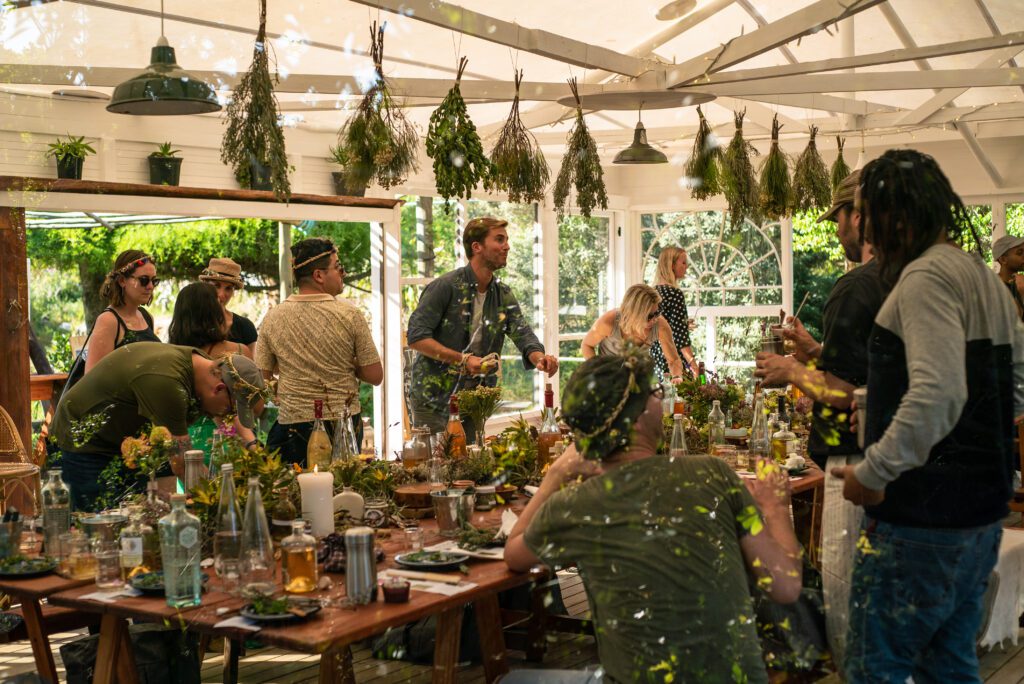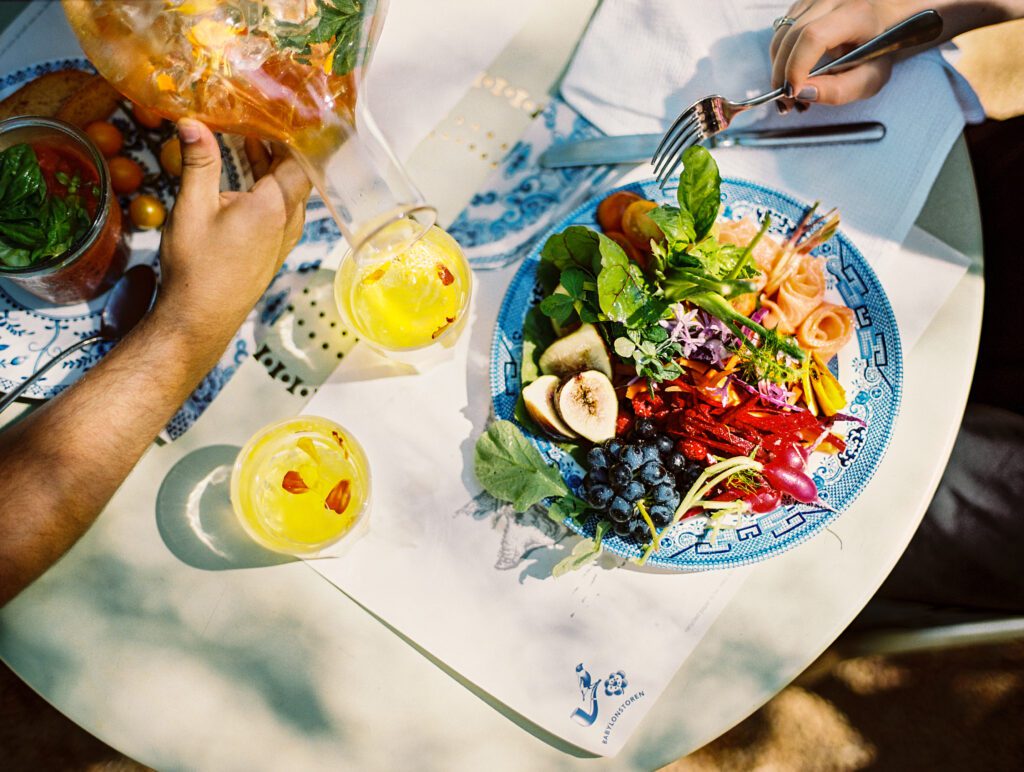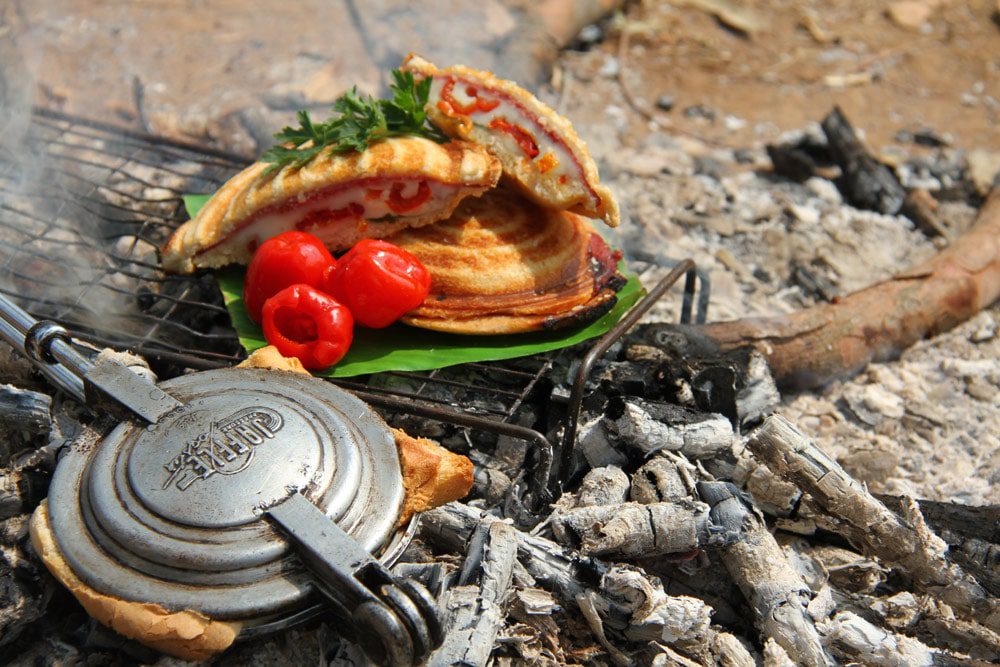When I tell people that I consider myself an epicurean—not a foodie—and that I am from South Africa, they always ask me what South African food is. My answer is never straightforward because, like most food-centric parts of our globalized world, the answer is never straightforward. The response invites someone to consider that South Africa is no different than culinary hubs in Asia, Europe, or Latin America. That said, we’re probably most similar to the United States, where more indigenous ingredients and styles of cooking are becoming more authentic and regional in presentation.
The food from my part of the world—like anywhere—is represented in what grows wildly in our soils, swims uninhibited through our rivers, streams and oceans and were the first to roam the rich fertile lands of the bush. (I also consider myself an honorary citizen of neighboring countries such as Zimbabwe, Botswana, Zambia, Mozambique, and Namibia).
While culinary hotspots such as Cape Town, the Cape Winelands, the West Coast, and Johannesburg provide plenty of options to enjoy first-class dining offerings on par with some of the best in the world, it is in the remote and non-urban areas where we can still savor the richness of what is authentically local while also consuming the history of a place. Here are five of these special places in Southern Africa and why I would recommend that everyone leave their places of comfort to eat through a whole new world.
1. Dining Experience at San Camp: Botswana

An experience at San Camp feels like retreating off the grid to a place of a bygone era. Many safari experiences are starting to feel more like a hotel in the bush than an authentic experience, San Camp has retained the elegance and grace of a classic safari. Much like the historical artifacts so proudly exhibited throughout the entire camp, so too is the food experience at camp genuine—part of telling the story from that time. It was a period when adventurers braved the unknown in search of new frontiers and discoveries. The dining experience at San Camp is by no means indigenous in terms of its ingredients and preparation, but it honors both the pioneers as well as the first people of the land. The vintage style of communal dining and a menu that offers old-school English classics reminiscent of intrepid travelers allows visitors to honor their journey by seeking out some of the last remaining remote and wild places. The experience is a part of preserving the spirit of both the land around San Camp and the property.
2. Veld & Sea Wild Foraging Experience: Cape Town, South Africa

The Veld & Sea experience teaches guests how to bring nature to the table, offering wild food foraging workshops, pop-up dinners, and weekends full of adventure. A foraged meal with Veld & Sea includes seasonal fynbos—a unique type of vegetation that can only be found on the southern tip of Africa. You’ll spend the day seaweed and shell fishing foraging by Scarborough beach, an eco coastal area, far away from the urban city center. Founder Roushanna Gray’s regenerative approach ensures the optimal regrowth of seaweeds and harvest of only an invasive species of mussels. Later, you’ll have a lovely multi-course lunch made from everything that you foraged: various seaweeds and non-native species of mussels. The experience is hosted in an ornately decorated glass house within an indigenous nursery near Cape Point Nature Reserve.
This deeply meaningful dining immersion allows guests to imagine walking in the footsteps of the first people of the land—the so-called “Strandlopers,” a Khoikhoi-derived people who lived by hunting and gathering food along the beaches of the then Cape Colony who evolved from the area. Warning: After this experience, you might never want to eat at another restaurant without having a hand in where the food came from.
3. Babylonstoren Agritourism Experience: Cape Winelands, South Africa

As someone who both enjoys the so-called finer things in life as well as that which grounds you, this is one of the most unique, and one of my favorite agritourism experiences in South Africa at present. There is nothing quite like it in the Western Cape. At Babylonstoren—one of the oldest Cape Dutch farms, set at the foot of Simonsberg in the Franschhoek wine valley— you are invited to consume from the land, based on what the season offers. From the fruit you enjoy in your breakfast ensemble to the delicious, fresh and tasty farm-to-fork restaurant offerings on the property, all of your senses are immersed and the art of eating becomes a soul-enriching experience as you consume from the Source. Babylonstoren pays homage to traditional, laid-back South African farm culture. It also celebrates ingredients that are native to the region such as waterblommetjies, buchu, and many things grown in the indigenous garden that this sprawling food and wine farm boasts.
4. Royal Chundu Dining Experience: Zambezi River, Zambia

This is one of the only remotely-located hotel experiences in a wildlife area that is intentional about offering an authentically local dining experience. Situated on the banks of the Zambezi River between the border of Zambia and Zimbabwe, and about 18 miles from Victoria Falls, Royal Chundu’s Zambian tasting menu both surprises and delights with a team of proud Zambian chefs and sommeliers, fueling it with additional life. A lot of ingredients such as wild honey, bondwe (a green plant that looks like spinach), and a local fish called kapenta (also known as The Tanganyika sardine) are sourced through partnerships with the local communities living along the river such as the agricultural Malamba village and the fishing-centric Muluka village.
Wild ingredients that come up after the rains feature prominently on the tasting menu to allow you to consume the land you are exploring. The dining experience either takes place at the open-air dining room overlooking the Zambezi river at the main lodge, River Lodge, or if you are staying on Chundu Island, you can either choose to enjoy it inside the elegant and eclectic dining room decorated by the owners and fueled by local colors and patterns or enjoy a magical meal under majestic trees along the tranquil Zambezi.
5. Dusty Road Township Experience: Victoria Falls, Zimbabwe

Creating delicious cuisine with locally farmed ingredients. Image courtesy of Dusty Road.
Passionate about both people and place, Dusty Road’s founder Sarah Lilford had a vision to create a deeply-rooted and meaningful dining experience that is truly local. Inspired by her travels she developed an appreciation for locally farmed, grown, sourced and seasonal ingredients. Located in the township of Chinotimba, arriving at Dusty Road feels like entering the beating heart of Zimbabwe’s Victoria Falls. Before even entering the establishment, you are already feasting on the colorful, eclectic, and quirky decor from recycled items such as the broken down bakkie (South African term for a pick-up truck) and metal goats welcoming you.
The restaurant is set up like a traditional market with a covered farm-stall-like building that looks out onto the outdoor dining area and a herb and a produce garden, with fresh cuttings displayed in colorful baskets. Flour packets are used as wallpaper. Ladies from the village, such as the lovely Orpha introduce you to how they use umjumbula (cassava) roots, Cashell Valley beans, zambani, kudu berries, and mupapanuka (tamarind). The kitchen has a traditional open-air wood fire kitchen. Tables and chairs (covered in chitenge fabric) are recycled items from drums to colonial tables. Dinner is served family-style. Here, you are consuming much more than delicious meals such as Nyiamo and Nyemba hummus, beef stew with sadza, chicken in peanut butter sauce or Zambezi bream with chindambi. Here, you’re eating through the culture and history of the land and people who, albeit many dark clouds that have loomed over their beloved Zimbabwe, will never let you go hungry for warmth and the most nurturing hospitality anywhere around the Falls.
Plan Your Trip
Talk to one of our travel specialists to plan a food-first, sensory journey with Melony van der Merwe through southern Africa. Your bespoke trip will be all about slow travel where adventures are grounded in culinary experiences steeped in culture, history, and spirituality.
Plan your Trip
Ready to start planning your own incredible adventure? We make the process stress-free and enjoyable.
